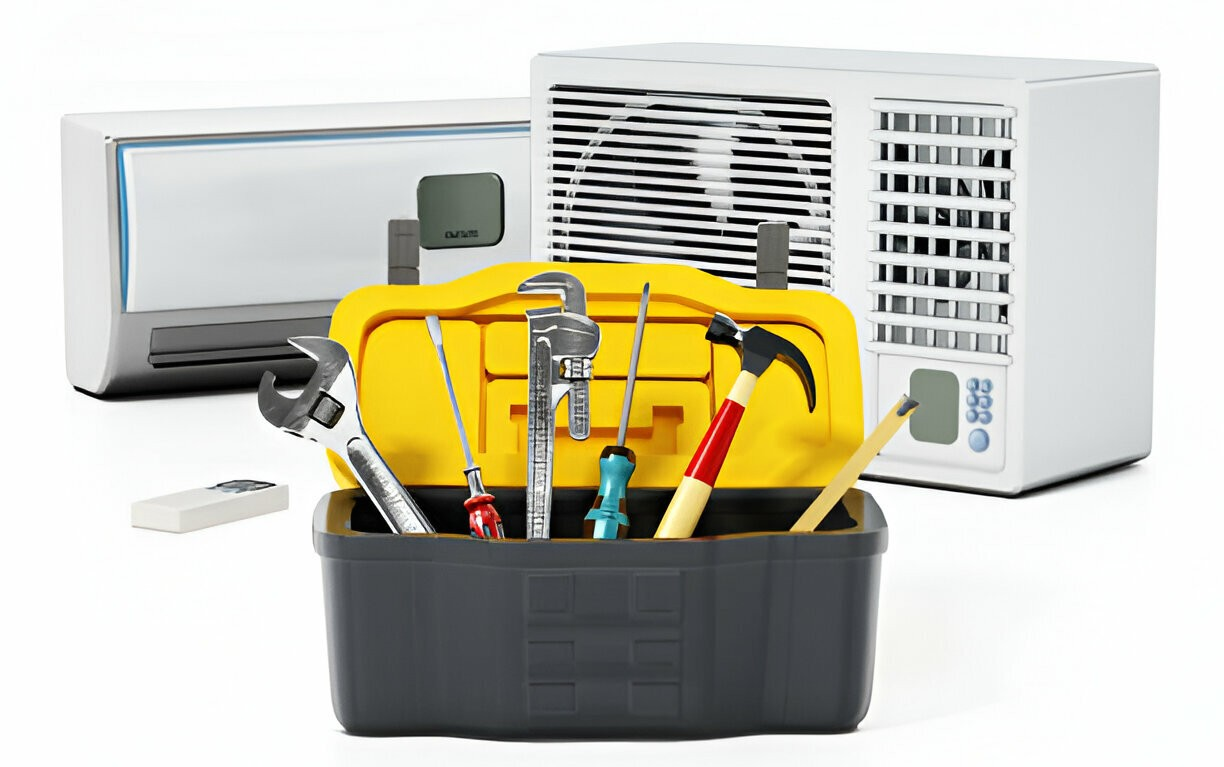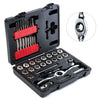
Innovative Technology in Air Conditioning Repair Tool Design
Air conditioning systems play a vital role in maintaining comfortable indoor environments, whether in homes, offices, or industrial spaces. As with any complex machinery, air conditioners require regular maintenance and occasional repairs to ensure optimal performance. Having the right tools for air conditioning repair is crucial for technicians to diagnose issues accurately and efficiently resolve them.
In this article, we will explore the innovative technology in air conditioning repair tool design that is revolutionizing the industry. From advanced diagnostic tools to ergonomic and versatile equipment, these innovations are enhancing the capabilities of technicians and streamlining the repair process.
Advanced Diagnostic Tools
Effective troubleshooting and diagnosis are essential for efficient air conditioning repair. The following tools incorporate cutting-edge technology to assist technicians in identifying problems quickly and accurately.
1. Thermal Imaging Cameras
a. Background
Thermal imaging cameras utilize infrared technology to detect variations in temperature. By capturing thermal images of air conditioning units, technicians can identify abnormal heat patterns, pinpointing potential issues such as overheating components, refrigerant leaks, or blockages.
b. Key Features and Benefits
- Non-contact temperature measurement: Technicians can measure temperatures without physically touching the equipment, ensuring safety and preventing damage.
- High-resolution images: Thermal imaging cameras capture detailed images, enabling technicians to identify temperature anomalies with precision.
- Time-saving diagnostics: By quickly identifying problem areas, technicians can focus their efforts on resolving specific issues, reducing repair time.
2. Refrigerant Leak Detectors
a. Background
Refrigerant leaks are a common problem in air conditioning systems. Detecting and repairing these leaks is crucial for system efficiency and environmental sustainability. Refrigerant leak detectors utilize various techniques to identify refrigerant leaks accurately.
b. Key Features and Benefits
- Ultrasonic leak detection: Some refrigerant leak detectors use ultrasonic technology to detect high-frequency sounds produced by refrigerant leaks, helping technicians locate the source quickly.
- Sensitivity adjustment: Technicians can adjust the sensitivity of the detector to focus on specific areas or concentrations of refrigerant, improving accuracy and efficiency.
- Visual and audible alerts: Leak detectors provide visual and audible signals when a refrigerant leak is detected, guiding technicians to the source.
3. Digital Manifold Gauges
a. Background
Digital manifold gauges replace traditional analog gauges by integrating digital displays and advanced functionalities. These gauges measure various parameters, including pressure, temperature, and superheat/subcooling, providing technicians with real-time data for accurate system diagnosis.
b. Key Features and Benefits
- Multiple parameter measurement: Digital manifold gauges measure pressure, temperature, and other relevant parameters simultaneously, eliminating the need for separate gauges.
- Real-time data analysis: Technicians can analyze the data displayed on the digital gauge, enabling them to make informed decisions and adjustments during the repair process.
- Wireless connectivity: Some digital manifold gauges offer wireless connectivity options, allowing technicians to transmit data to mobile devices for further analysis and documentation.
Related Article: Top 10 Air Conditioning Repair Tools for Beginners
Ergonomic and Versatile Equipment
The nature of air conditioning repair work often involves repetitive tasks and working in confined spaces. Ergonomic and versatile tools enhance technician comfort, safety, and productivity. The following innovations address these considerations.
1. Lightweight and Compact Vacuum Pumps
a. Background
Vacuum pumps are essential for removing air and moisture from air conditioning systems before refrigerant charging. Traditional vacuum pumps tend to be heavy and bulky, causing discomfort and inconvenience for technicians.
b. Key Features and Benefits
- Lightweight design: Innovative vacuum pumps are designed with lightweight materials, reducing the strain on technicians and enhancing mobility.
- Compact size: Compact vacuum pumps are easier to maneuver in tight spaces, making them ideal for air conditioning systems installed in confined areas.
- High pumping speed: Despite their smaller size, these pumps maintain high pumping speeds, ensuring efficient and thorough evacuation of air and moisture from the system.
2. Cordless Power Tools
a. Background
Cordless power tools have gained popularity in various industries, including air conditioning repair. These tools eliminate the need for power cords, providing technicians with greater flexibility and convenience.
b. Key Features and Benefits
- Portability and maneuverability: Cordless power tools allow technicians to move freely without the restriction of power cords, making them ideal for repairs in different locations.
- Enhanced safety: With no cords to trip over or accidentally damage, cordless tools improve safety in the workplace.
- Battery technology advancements: Modern cordless power tools utilize advanced battery technologies, such as lithium-ion, offering longer runtimes and faster charging capabilities.
3. Flexible and Articulating Inspection Cameras
a. Background
Inspecting hard-to-reach areas in air conditioning systems can be challenging. Flexible and articulating inspection cameras enable technicians to visually examine inaccessible components and identify potential issues.
b. Key Features and Benefits
- Flexible camera probes: These probes can bend and maneuver through narrow openings, allowing technicians to view components from various angles and positions.
Related Article: Maintenance and Care Tips for Air Conditioning Repair Tools
Advancements in Air Conditioning Repair Tool Design
Innovative technology in air conditioning repair tool design has significantly transformed the industry, empowering technicians with advanced diagnostic capabilities and ergonomic equipment. Tools like thermal imaging cameras, refrigerant leak detectors, and digital manifold gauges enable technicians to diagnose problems accurately and efficiently. The incorporation of lightweight and compact vacuum pumps, cordless power tools, and flexible inspection cameras enhances technician comfort, safety, and productivity. These advancements not only streamline the repair process but also contribute to improved system performance and customer satisfaction.
Related Article: Air Conditioning Repair Toolkit: A Comprehensive Guide



